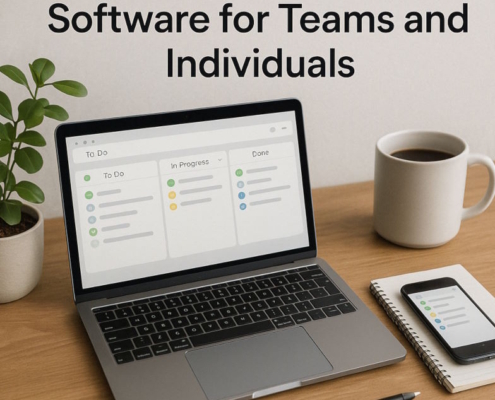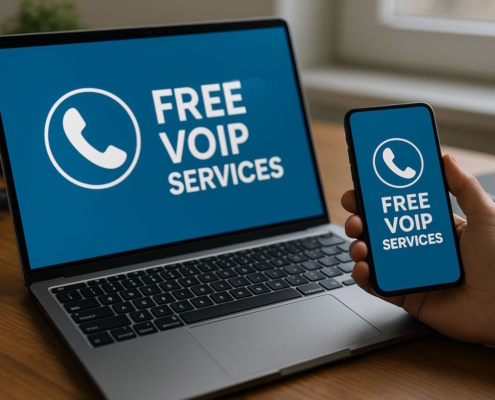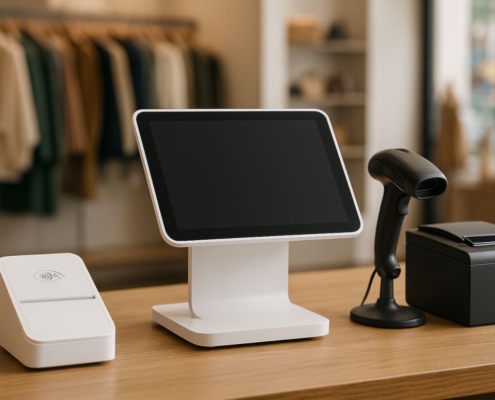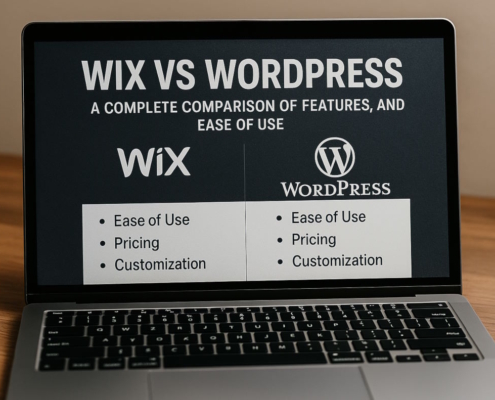Introduction
My team’s load wasn’t the problem, I learned a few years back; rather, it was the manner in which we handled it. The lack of a defined method was the only reason why we had a backlog of work, missed deadlines, and lost motivation.
Up to 41% of employees report feeling stressed out as a result of their excessive responsibilities, according to research.
Choosing the appropriate task management tool revolutionized our work. In order to balance workloads, set reasonable deadlines, and prevent burnout, it provided me with the structure and visibility I needed.
I created this list of the top 20 task management tools for that reason, along with my team. We’ve outlined the main characteristics, restrictions, and costs so you can choose the best option for task delegation, efficient prioritization, and maintaining workflows.
What qualities are important for a task manager?
Task management software is useful for more than just identifying, tracking, and managing activities for cross-collaborative groups like mine. Beyond just facilitating a basic to-do list, it provides tools for productive teamwork on complex workflows for successful goal achievement.
The best task management software makes it simple for my team to prioritize projects, set deadlines, monitor progress, and modify calendars, all of which facilitate easier decision-making. We also give priority to other helpful features like:
- Flexibility: I’ve found that effective task management application always includes an intuitive user interface. Extra points if it functions flawlessly across all main operating systems and devices, allowing my team greater authority over daily tasks.
- Time tracking: We believe it’s preferable to choose a task management program that enables smooth time monitoring, which will help us manage our time better.
- Work automation: Automation is essential to growing your work base in a sustainable manner as your organization expands. With the help of the best task management software, we can automate repetitive administrative activities, freeing up more time for high-level, cognitively challenging tasks.
- Communication support: As the leader of a busy, dispersed team, I appreciate tools that facilitate effective file sharing, task-related conversations, and immediate notifications.
- Data collection and analysis: We have observed that the best task management software offers reporting capabilities for the purpose of recording and analyzing data (such as overtime, absence, and clock-in/clock-out information) for payroll, invoicing, and productivity analysis.
- Integration with additional tools: This may just be a matter of taste, but I find it convenient when the task management tool works with other programs we use, such as writing assistants, project management software, and messaging apps, because it removes context-switching and greatly facilitates teamwork and task monitoring.
Best Task Management Software: Top 20
Not every task management tool is made equally. While some are adaptable, others concentrate on mastering particular features, such as task dependencies.
Ultimately, we selected the top twenty task management programs that simply had to be on the list. You can be certain that you will find something that meets your urgent needs because we carefully selected them based on a variety of factors, including feature set and price.
1. ClickUp: Best task management software overall
Although we may be a little biased, ClickUp has consistently shown itself to be an excellent task-management tool for teams, professionals, and individuals. With a ranking of #1 in over 15 different categories, G2 believes it to be the best task management software.
ClickUp’s end-to-end, AI-enabled support for managing priorities and tasks, tracking progress, and maintaining productivity is what makes it noteworthy.
To complete their work, a knowledge worker typically has to link with six people. In order to obtain crucial context, align goals, and advance initiatives, this entails contacting six key contacts per day.
The battle is genuine—continuous follow-ups, unclear versions, and visibility gaps reduce team output. Tasks and discussions are combined via a single platform such as ClickUp, which also adds AI insights & actions to them and puts context at your fingertips instantaneously.
How ClickUp is used for practical work management
ClickUp is used in a fairly simple way by my team. For one thing, ClickUp Tasks is used for all of our tasks, from monitoring individual assignments to centralizing task scheduling and planning.
To make tracking easier, we can group team tasks by category and change the Custom Task Level from ‘To be completed’ to ‘Done’. Setting deadlines, adding assignees, and defining additional information we wish to monitor or filter through are all possible with an unlimited number of Custom Fields. With every task, our team may also:
- To consolidate contextual information and conversations, provide links and comments.
- Indicate task dependencies to provide schedule management visibility.
- Lists and subtasks may be established to handle lengthy deliverables.
- For task delegation and update sharing, utilize @mentions with action items.
Additionally, ClickUp Task Priorities & its color-coded labels are used to determine what should be prioritized and deprioritized when faced with an excessive workload.
ClickUp Calendar facilitates the planning of project deadlines, task prioritization, calendar sharing with coworkers, event scheduling and participation, and task dragging & dropping on the calendar to modify event durations. In order to ensure that you always meet deadlines, you may create reminders and alerts and view your assignments in several views, such as weekly, monthly, or daily views.
Additionally, we reduce team burdens by automating time-consuming chores like organizing documents or monitoring emails with ClickUp Automatons.
ClickUp’s ability to remove conventional barriers between task execution and communication is what really makes it magical.
Teams using conventional work management solutions are forced to juggle several apps, alternating between project trackers, chat platforms, and communication channels on a regular basis.
By establishing a single workspace where chores and chats coexist, ClickUp Chat breaks down this division. Use ClickUp to communicate with colleagues in group chats or private direct messages, brainstorm ideas, provide progress reports, and join brief video or audio sessions to keep assignments moving forward. This is how:
- Chat fulfills tasks: For immediate context, immediately connect discussions to tasks & projects.
- Transform words into action: You may follow up on any message by turning it into a task with just one click—ClickUp’s artificial intelligence even completes the work description & details for you.
- Maintain structure: Chat threads maintain a connection to your workflow, preventing misunderstandings and keeping participants in agreement.
The key to productive stress-free work: ClickUp Brain and custom templates
In addition to helping us with work tracking and prioritization, ClickUp also supports project management. To automate task planning, project summaries, and job standups & updates, for example, we use ClickUp Brain, the application’s AI assistant.
Through the use of a neural network, ClickUp Brain links the team’s platform discussions, documents, and tasks. It assists us in gathering and condensing information and tasks using straightforward questions and suggestions.
Furthermore, we can standardize task allocations right away with the use of customizable ClickUp templates! For those who are unfamiliar with this system, the ClickUp Task Management Templates might serve as an excellent place to start. You may make it easier to navigate by grouping your assignments into lists such as Action Items, Concepts, and Backlog by using this free template. To monitor assignments by division or priority label, open distinct views.
The best features of ClickUp
- More than 1,000 templates to get you started with effective task management
- Time-tracking and intuitive job-scheduling platform
- ClickUp Dashboards for productivity measurements and task tracking in real-time
- To establish quantifiable task KPIs, use ClickUp Goals.
- Using the task checklist tool makes creating a to-do list simple.
- Several project views, including Timeline, Table, and List
- Personalized task statuses to enhance your workflow
- Several tasks can be edited simultaneously with a Bulk Action Bar.
- Integrated layers of task-prioritizing
- Using universal search & tags to swiftly access tasks
- Enables the creation of tasks straight from ClickUp Documents and Whiteboards
- Connects to more than 1,000 apps, including HubSpot, Gmail, Outlook, Zoom, and Slack.
- Dedicated Android and iOS mobile application
ClickUp Drawbacks
- Discovering all of its task management capabilities takes time, but you can use the ClickUp assistance center to speed up the learning process.
- The addition of a specific subtask reporting tool would make it fantastic.
ClickUp Reviews and Ratings
- G2: 4.7/5 based on over 9,000 ratings
- 4.7 out of 5 on Capterra (4,000+ reviews)
When it comes to task management, the platform has received mostly excellent ratings. One user sums up their experience as follows:
“The “add to” button for tasks is my most favored function because it allows me to keep track of all of my key projects in one place. Anybody who needs it can work on subtasks within a project or epic by assigning them to the appropriate area or list. Having a top-down overview of each subtask’s location and progress is crucial for monitoring what has been finished and what has not. It’s great to be able to add particular fields anywhere I need them.”
2. Asana: Ideal for teams working remotely
We adore Asana as a virtual task management tool for remote teams—there is no more diplomatic way to describe it! First, by using the centrally located Inbox function, we can cooperate on tasks & updates and utilize pre-made templates to arrange our remote assignments.
We found that adding and monitoring cross-team activities across several projects was remarkably simple as we continued to test the platform. In essence, I can guarantee that the identical assignment is never repeated in a different department—a troublesome situation for remote teams!
I can add assignees with a few clicks, specify due dates, embed files to provide context, and write descriptions of tasks in the style of bulleted lists. Additionally, creating subtasks, identifying obstacles, and expediting task change permissions are all simple.
The Workflow Builder function, which allows us to construct processes without knowing any code and automate repetitive tasks to speed up projects, is what I think sets Asana apart from its competitors. A My Tasks section is another feature of this best task management software that aids in work prioritization by automatically boosting tasks according to due dates.
For someone working remotely, Asana is an excellent collaborative task management solution. My scattered team had the capacity to communicate immediately within the software, which promoted cross-functional cooperation with little difficulty. We advise including pertinent partners in your team’s tasks to increase transparency and prevent them from being unaware of your progress.
Best features of Asana
- Templates for managing tasks
- Tools that facilitate remote cooperation
- Workflow builder with zero-code
- Options to search and filter for easier navigation
- Connects to programs like Dropbox and Slack
Asana Drawbacks
- Implementation could be difficult for larger teams.
- Features for cooperation and storage could be enhanced.
Asana ratings & reviews
- G2: 4.3/5 based on over 9,000 ratings
- Capterra: 12,000+ reviews, 4.5/5
Asana’s auto-reminder functionality has received positive reviews from a lot of users, including this one:
“I appreciate how Asana creates and assigns tasks to team members and automatically reminds them to finish them on time. Our coworkers can keep track of their list of tasks without having to check numerous emails and messaging apps thanks to their very useful reminder emails.”
3. Jira: Ideal for seasoned IT specialists
Because of its relatively complicated feature set, Jira was not as user-friendly for beginners as other options when I initially started looking into it. However, it was worth a shot because Jira is the best task management software choice among experienced professionals in fields like marketing, finance, IT, and human resources.
Jira was initially introduced by Atlassian to be a developer’s issue-tracking tool, but it has now expanded to become a helpful tool for task and project managers. I have discovered it to be a really useful tool for managing Agile projects.
In order to break down a large Agile project into reasonable sprints, my team attempted to draw up a hypothetical workflow. We were given the choice to organize tasks under:
- Projects run by the company: A typical admin-controlled process
- Projects managed by teams: A more independent setting for autonomous groups
Tracking sprint tasks and identifying obstacles to promote continual development is made simple by Jira’s many perspectives, such as boards & timelines. By enabling brainstorming and task information sharing across departments via shared processes, the application also facilitates team cooperation.
In order to guarantee ongoing progress, Jira’s many views—such as boards and timelines—make it simple to monitor sprint tasks and spot obstacles. Through shared processes, the platform facilitates cross-departmental brainstorming and task information sharing, further fostering team collaboration.
Let’s move on to effectiveness. Jira enables real-time updates to custom job statuses, and its automaton function enables manual operations to be performed in the background. Project managers may additionally employ its many task management modules to automate tasks.
Jira’s finest features
- Assistance with workflow automation
- For teams practicing agile, several task views
- Templates for specialized fields including IT, marketing, and HR
- Connects with popular applications such as Atlassian Work Management
- Task management applications that work well on iOS and Android
Jira Drawbacks
- The system may occasionally be sluggish.
- The dashboard and user interface could potentially be made better.
Jira ratings & reviews
- G2 (5,000+ reviews): 4.3/5
- 4.5 out of 13,000 ratings on Capterra
4. Monday.com: Ideal for PMO and marketing teams
Can Mondays be less horrible if you use Monday.com to manage your tasks? Yes, we believe! This straightforward task management program has all the essential features that you would find in the majority of Monday competitors, including numerous task views and task templates.
However, our study team’s favorite feature is the software’s unique task management capabilities for PMO and marketing teams. Key capabilities like campaign monitoring, powerful Gantt charts (for creating work schedules), and brand asset management, for instance, might be advantageous to marketing teams. For future job planning, PMO teams, meanwhile, rely on tools for tracking time, detecting dependencies, and monitoring OKRs.
I believe Monday.com’s user-friendly interface makes it stand out as well. With its Work Management tool, you can design marketing workflows without knowing any code for particular tasks like social media management, event planning, and content production.
The tool’s user-friendly style was even praised by the project managers I spoke with. For instance, by providing them with instant summaries of job status on a dashboard, the platform enables them to draw well-informed judgments.
Moreover, Monday.com lets you set up workspaces into assignments with distinct tasks & subtasks, along with color-coding choices to make it simple to keep track of task priority and statuses.
Overall, it’s a strong task management program with features and a look that is somewhat comparable to Asana. Additionally, the platform is integrated with other interactive platforms and leading marketing tools.
Top features of Monday.com
- Comprises more than 200 automation options.
- Priority levels and custom job statuses are color-coded.
- Easy-to-use project templates
- Setup of no-code processes
- Provides a mobile application for Android and iOS.
- Connects to more than 200 apps
Monday.com drawbacks
- Initially, the setup can be overwhelming.
- Certain clients have trouble setting up personalized reminders and observe notification delays.
Monday.com ratings & reviews
- G2: 10,000+ reviews, 4.7/5
- 4.6 out of 5 on Capterra (4,000+ reviews)
5. Trello: Ideal for small groups
Part of the reason I always love Trello is that I’m a huge lover of Kanban boards. Trello’s simplicity is a major factor in my ranking it on our list; most applications for project management are more difficult to use than Trello, which renders it ideal for handling linear tasks at smaller levels.
For simpler status tracking, this excellent task management software focuses on transferring tasks, such as sticky notes, into a drag-and-drop board (Kanban). It can be used by individuals to make customized task lists, and team members can utilize sophisticated checklists to provide task context by including assignees and due dates.
Using labels such as medium, low, or high priority, this software facilitates work prioritization in terms of fundamental task management. Simply filtering through the labels will allow us to quickly create a status report and access a particular batch of jobs.
It’s also quite easy to use Butler, Trello’s no-code (and adorable!) automation tool. My team’s less technologically inclined individuals can automate repetitive processes by developing basic rules, controls, and commands.
Trello makes it possible to visualize tasks on timelines, calendars, and well-organized tables—all of which are frequently more than sufficient for managing workloads in small groups. An enterprise-featured Trello competitor might be a better choice, though, if you’re managing a bigger group or a more complicated project that calls for flexibility and a greater range of project perspectives.
Top features of Trello
- Butler—a tool for automation without code
- Software that tracks tasks in a Kanban manner
- Contains timetables, calendars, and checklists.
- Color coding aids in work prioritization.
- iOS and Android mobile applications
- Connects to Jira and other task management platforms
Trello drawbacks
- Costs more as the number of users rises.
- Complicated project management might not be supported.
Trello ratings & reviews
- G2: 13,000+ reviews, 4.4 out of 5.
- Capterra: 23,000+ reviews, 4.6 out of 5.
One user shared the following thoughts about using Trello to finish tasks and projects:
“Trello offers software development teams an easy-to-use platform for Kanban and Agile workflow management. Because of the user-friendly layout and customizable boards, lists, and cards, tasks may be created and arranged with ease. Even while Trello’s user-friendliness is one of its primary benefits, it might not offer all the sophisticated project management features of more comprehensive programs.”
6. Hive: Top-rated task management application for multi-level teamwork
My initial understanding of Hive was limited when I began testing it. With use cases spanning from client engagement to resource and project management, the platform positions itself as an all-inclusive project management tool. I can declare with confidence that this product is the best at promoting team cooperation, even though I primarily looked at its task management capabilities.
Hive offers a task management tool for every hybrid team so they can:
- Regardless of where you are, assign, monitor, and carry out tasks collectively.
- Track forthcoming tasks in several divisions.
- Simplify task intake information using forms.
- Hive Notes, text messaging, and voice chat allow you to collaborate synchronously or in real time.
Hive facilitates teamwork by enabling comments to action cards and team member tagging, which allows coworkers to interact across projects.
Working together is easier here since you may view your projects from different perspectives. The Label mode can be used to classify subtasks, and the Portfolio mode can be used to obtain a comprehensive overview of activities across projects. By enabling the My Actions option to show my tasks in a focused manner, I believed I could improve my concentration.
Additionally, we can depend on essential features including task status to effortlessly monitor advancement, templates to personalize project designs and business procedures, and notifications to ensure we don’t miss anything. Additionally, Hive provides the Workflows App, a no-code job automation tool that may help you create customized automated workflows and reduce human labor.
Best features of Hive
- A collaborative tool for managing tasks
- Facilitates discussions on projects, in groups, or individually
- HiveMind, an AI assistant, offers templates to help with routine chores
- Every task you’ve been given is tracked in the ‘My Actions’ view.
- Has a job automation tool that doesn’t require any code.
- Google Drive and Dropbox integration
Hive drawbacks
- The functionality of the mobile app is restricted.
- With numerous partners, UX may be impaired.
Hive ratings & reviews
- G2: 500+ reviews, 4.6/5
- Capterra: 100+ reviews, 4.5/5
7. MeisterTask: Ideal for managing tasks using the Kanban method
Kanban boards are a major component of the majority of MeisterTask substitutes. But it’s important to note that MeisterTask’s ease of use and intuitiveness make it a great choice for Kanban-based task control software.
We can organize and keep an eye on task cards with the tool’s wonderfully designed Kanban-style boards. We are able to indicate if a task is on our To-Do list, completed, or in progress (or construct custom sections). What’s interesting is that we have access to more conventional scheduling by switching to a timeline view similar to Gantt charts.
These boards facilitate efficient communication via task comments while maintaining all work in one place. Coworkers can be added as project watchers, mentioned in the comments, and given assignments straight from the board. To keep everybody informed of the most recent developments, just turn on notifications in real time whenever you oversee projects that are subject to change.
In addition to collaborative boards, the program provides Agendas, which are individual Kanban pinboards where we may arrange all of the tasks put in front of us and quickly access deadlines and critical information.
The tool’s attractive UI is praised in several MeisterTask user reviews. Here is what one verified user said:
“The vibrant Kanban-style design, tags, the ability to create several project lists, MindMeister connectivity, and the simplicity of task spawning from other websites. I use my iPad, tablet, and phone.”
The best features of MeisterTask
- Kanban boards that are simple to use to monitor project progress
- Able to function as an individual task management tool
- Collaboration on tasks through remarks
- Dashboards for monitoring tasks, time, and notifications
- Enables the automation of repetitive operations
- Mobile apps for Android and iOS devices
MeisterTask drawbacks
- A workflow-based calendar would be a useful addition to the software’s functionality.
- On handheld gadgets, notifications could be delayed.
MeisterTask ratings & reviews
- G2: 100+ reviews, 4.6/5
- 7 out of 5 on Capterra (1,000+ reviews)
8. nTask: The best scheduling software for managing tasks
Task is an SMB-focused platform for managing and planning activities in three categories: projects, workflow, and to-do lists. In addition to defining processes for certain tasks like designing, financial management, and freelancing, the goal is to generate lists of tasks for personal as well as professional use.
To create detailed timetables and delegate jobs or whole work lists to your peers, I think the Projects tab offers a fairly clutter-free layout. If you’re new to the system, you can begin by creating a weekly schedule sheet that includes tasks, assignees, and descriptions. You may then add jobs as needed using the Task Builder.
My team used nTask, an interactive task management tool, to see projects using color-coded Gantt charts, manage linked delivery schedules, and plan and assign activities in a Kanban style.
To assure timely completion, for instance, we plan activities by establishing milestones and task dependencies, as well as anticipated and real due dates. Subsequently, we establish priorities, personalized status updates, and instant alerts to guarantee that no action is missed.
Because of Task’s powerful time-tracking features, we are able to adhere to reasonable deadlines. With the ability to track time spent on activities and predict how long my team will require for upcoming tasks, scheduling (and billing) becomes easier as time passes.
The best features of nTask
- Provides several project views (calendar, list, board, and grid).
- Entire job monitoring
- Gantt charts provide visual management of tasks and scheduling.
- Features for recurring jobs that repeat every day, every week, or every month
- Connects to over 1,000 tools, including Microsoft Teams, Zoom, and Apple Calendar
- iOS and Android compatibility
nTask drawbacks
- It can be difficult to attach documents and photos to jobs.
- The interface for users could have been easier to use.
nTask ratings & reviews
- G2: 4.4 out of 5 (10+ ratings)
- 2/5 on Capterra (100+ ratings)
9. ZenHub: Ideal for teams working on software
The project management tool ZenHub is mostly used by software development teams. Through a browser plugin for Mozilla Firefox or Google Chrome, it offers a native GitHub interface. This keeps project tasks linked to GitHub code, which helps minimize context switching.
Additionally, by removing manual progress updates from your team’s to-do list, ZenHub streamlines task completion by providing automatic task updating when users finish issues in GitHub. Additionally, automatic hand-offs are available to update every interconnected workspace.
With the help of this online software development and task management application, teams may examine all ongoing jobs and their statuses by organizing them on user-friendly, drag-and-drop boards.
Prioritize work, keep tabs on projects, and link pull requests to related issues using these boards. Organize associated problems into Epics or link different public and private GitHub repositories to just one board.
With agile teams, ZenHub is a useful tool because it also provides sprint planning capabilities. Setting up automatic sprint cycles, receiving regular progress reports, and automatically creating new sprints containing prioritized and incomplete tasks are all made possible by it.
ZenHub AI has also generated some very intriguing ideas (automated problem classification, sprint reviews, etc.). To test out its beta program, though, I couldn’t get past the queue.
The best features of ZenHub
- Several important elements for agile teams
- GitHub integration that is native
- Offers spring planning and monitoring.
- Boards with user-friendly task management features
- Automate handoffs and repetitive chores.
- Serves as a visual tool for work management that includes timelines and roadmaps.
- Connects to Loom, Miro, and Figma
ZenHub drawbacks
- High learning curve
- The UI could be difficult to use.
ZenHub ratings & reviews
- G2: 30+ reviews, 4.3/5
- Capterra: 30+ reviews, 4.4/5
10. Zoho Projects: Ideal for managing complex projects
Zoho Projects is a dependable project management tool that includes tools like resource usage charts, project timesheets, team monitoring, and issue tracking. This software can be quite useful for managing complicated projects in sectors like marketing, building, IT, and consulting, based on the variety of applications we looked at.
With the help of its extensive task management toolkit, Zoho Projects helps us divide projects into goals, task lists, & subtasks for easier tracking. Each assignment on this task management tool can include features such as assignees, hours of work, priorities, and notifications. Additionally, we may track the amount of time devoted to each task using timesheets & timers.
In addition to scheduling tasks on a calendar, we’ve been able to concurrently observe the team members’ capacities. This is essential, in my opinion, for balanced job planning and preventing team fatigue.
Like a lot of Zoho substitutes, this product makes task management easier by offering adjustable statuses and Kanban-style displays featuring drag-and-drop job cards. Gantt charts can be used for complicated workflow planning & tracking. They allow us to establish dependencies, identify specific team tasks, and track deadlines to make sure everything is completed on time.
Given that Zoho Projects provides a consolidated view of your assignments throughout sister platforms, I think it’s a terrific way to consolidate your task environment when you utilize other Zoho services, like Zoho Mail and Zoho CRM.
The best things about Zoho Projects
- Accessible Gantt charts
- Allows for a variety of task management applications.
- Workflows that are highly customizable using project templates
- Using calendars to easily schedule tasks
- Connects to multiple Microsoft, Google, and Zoho applications
- Android 4.1+ and iOS 9.0+ task management applications
Zoho Projects drawbacks
- The initial setup could be difficult.
- It can take a lot of time to customize software.
Zoho Projects ratings & reviews
- G2: 300+ reviews, 4.3/5
- Capterra: 400+ reviews, 4.4/5
Although often confusing, the product is generally praised in reviews for being helpful. Here’s a passage:
“Zoho Projects is helpful for assigning tasks, finishing several projects at once, and knowing who will complete what by when. It enables users to enter their time and record the amount of time it took users to complete the task. Creating tasks can be somewhat complex at times due to the numerous tiresome requirements that may be misunderstood while attempting to allocate work.”
11. ActiveCollab: Ideal for client-based workflows that require individualized task management
The main goals of ActiveCollab are to boost output and effortlessly meet deadlines in client-based workflows. Whether you are a small creative group or a startup, the technology allows you to invite as many clients as you want to use the system for better feedback loops and collaboration. I think this alone may assist in getting rid of those follow-up chain emails and difficult-to-steer customer encounters.
My encounter? Along with assigning duties to my squad, I was additionally able to divide complicated tasks into smaller ones for my clients, making sure that every assignment was completed on time. Furthermore, there are features like:
- Add assignees, deadlines, and thorough work descriptions.
- Group assignments according to various standards.
- Make duplicates of routine tasks.
Just three project layouts are available in this task management tool, which is fewer than what ActiveCollab counterparts usually provide. The Gantt chart, List view, and Kanban board are among the often-used views, nevertheless.
It’s worth mentioning even though automation seems to be a recurring subject at this point: ActiveCollab can decrease manual work by automating repetitive chores like creating weekly reports. Additionally, just establish dependencies between various jobs if you need to guarantee that operations are carried out in a specific order.
ActiveCollab emphasizes the value of an individual task manager, which may be helpful for independent contractors. Your task tasks can be found and arranged by project, customer, or finish date on its My Work page.
The timesheets from ActiveCollab also really impress me. In addition to receiving a summary of all my time logs, I can obtain project-level timekeeping to make billing simpler. I can even look back at my output with respect to the remarks I’ve made, the tasks I’ve started or finished, or the dates I’ve changed.
The best features of ActiveCollab
- Great personal task management app with features to automate tedious chores
- Dependencies for carrying out actions in a particular sequence
- Smartphone apps for iOS and Android
- Connects to more task management programs, such as Trello and Asana.
ActiveCollab drawbacks
- It could have been easier to use this job management software’s file-sharing capability.
- Expanding the choices for customization would be advantageous.
ActiveCollab ratings & reviews
- G2: 90+ reviews, 4.2/5
- 5 out of 5 on Capterra (300+ reviews)
12. Wrike: Ideal for managing scalable workflows
Wrike is renowned for having strong workflow and task management capabilities. Its exquisite scalability, however, is something that many users overlook! I can create a library of unique tasks using the platform, for example, that replicate our fundamental processes; we can use this as a starting point for all of the future workflows. The best aspect is that we can construct a workplace that is specific to a department, position, or even industry by expanding this library.
Throughout our testing period, we generated a multi-level list of tasks for folders, goals, stages, and projects, among other levels. Some of us even made customized dashboards by marking crucial items from our task list, which were then automatically arranged according to their due dates and priorities.
The platform facilitates excellent teamwork, just like the majority of Wrike’s rivals; we can work together on task assignments, project plans, & decision-making in real-time. Additionally, to save time and boost productivity, the software has integrated task automation and proofing capabilities for prompt yet thorough task feedback.
Furthermore, Wrike enables project managers to create editable reports on team and task performance. By examining pertinent KPIs (key performance indicators) on dashboards, for example, I was able to further optimize procedures.
Best features of Wrike
- Detailed project dashboards with customized reports
- Encourages teamwork that is open to feedback
- Various project perspectives
- View tasks using Gantt charts, calendars, and Kanban with 400+ third-party integrations.
- Automating tasks
Wrike drawbacks
- Additional choices for customized displays would be helpful.
- Task syncing problems are experienced by certain users.
Wrike ratings & reviews
- G2: 4.2/5 based on over 3,000 reviews
- 3 out of 5 on Capterra (2,000+ reviews)
13. Todoist: Ideal for budget-conscious teams
Despite the fact that several of the Todoist competitors on our list have extra project management capabilities, this seasoned tool only focuses on task management. One of the very few applications that continuously improve within its specialized market, in my opinion, is Todoist. We can now use natural language to define recurring tasks and make comprehensive daily checklists, for example.
With the ability to create tasks & subtasks, assign priority, add deadlines, and configure reminders to make sure nothing is missed, the program checks every required box for fundamental task management and planning.
Todoist is a task management program, but it may also help you handle small projects because it has goal-setting tools, descriptions of tasks to keep information organized, and labels to classify jobs.
I really liked the Upcoming calendar view because it shows what jobs are due immediately and allows me to rearrange assignments using a drag-and-drop feature if something is too demanding. Additionally, I just switch to the Today option if I want to concentrate on team assignments that are due right now.
Although Todoist’s low cost and easy-to-use interface make it a useful tool for managing personal tasks, it’s also a terrific to-do list application for businesses on a small budget. You continue to assign tasks and use comments to improve transparency and teamwork even though its project management tools aren’t very extensive. Following their use of the tool, an owner of a small company shared the following:
“Incredibly simple to use for users with differing degrees of technological proficiency. Every member of our team uses Todoist, and I use it multiple times a day. Because of the reminders that are sent out when chores are finished, there is a much lower likelihood that people will forget or lose them, and they remain accountable.”
The best features of Todoist
- Effective management of daily tasks
- Various task views, such as lists and Kanban boards
- Simple navigation for tracking project progress and basic team collaboration assistance
- Connects to a number of time-tracking and productivity applications
- Has an iOS and Android to-do list app.
Todoist drawbacks
- It could be difficult to integrate the program with some apps.
- If the app showed tasks when you aren’t online, that would be useful.
Todoist ratings & reviews
- G2: 4.4 out of 5 (more than 700 reviews)
- Capterra: 4.6 out of 5 (2,000+ reviews)
14. ProofHub: Ideal for tracking tasks in detail
ProofHub, in addition to being an effective task management tool, is a task tracking program that makes it simple to make task lists & individual assignments, allocate them to many team members, and closely monitor deadlines and priority for each job category. I am very impressed with the platform’s task monitoring Table view, which allows me to track the percentage of progress for tasks across several categories without having to be a bothersome micromanager.
Like rivals to ProofHub, the program is completely customizable; we can create customized workflows and utilize custom fields to record whatever task-related information that my team thinks is crucial. Task tracking is improved with custom fields since we may modify them to capture almost any detail, including output or deadlines.
When it comes to tracking, ProofHub offers a user-friendly interface for setting up task dependencies, which guarantees that activities are finished in a specific order. You can put remarks or remarks on tasks to help assignees understand the tasks better.
Furthermore, ProofHub provides a range of reporting choices to aid in understanding the status of a project. By examining resource consumption statistics or using task completion reports to monitor project-specific execution, you can improve resource allocation.
The best features of ProofHub
- Software for multifaceted task tracking
- Workflows that can be altered
- Encourages task-related conversations by leaving remarks and highlighting
- Reports to assess the status of tasks, including tables and Kanbans
- Mobile-friendly
ProofHub drawbacks
- Managing notifications can get challenging.
- Its customizing features are complicated for some people.
ProofHub ratings & reviews
- G2: 80+ reviews, 4.5/5
- Capterra: 90+ reviews, 4.6/5
15. SmartTask: Ideal for overseeing multiple projects at once
SmartTask has every essential functionality you would expect from a task management application. Calendar, list, & board views allow you to manage tasks, add dependencies, and set deadlines. Here, I would point out that you may optimize dependent, overlapping, or ignored activities to create a realistic workflow—this is the kind of insight you require when your team is managing five or more projects at once.
I find that this program is particularly noteworthy due to its capabilities for cross-functional project management. With its Project Portfolios function, you can coordinate your design, sales, and marketing teams by creating several boards to track distinct goals. To be safe, you can even distribute task lists among groups to avoid orphaned actions.
By enabling real-time change notifications and task comments, SmartTask facilitates team communication. Additionally, we can send out invitations to clients, vendors, and other external stakeholders to work together on any project or assignment.
Additionally, it offers dashboard statistics on sales and project tasks, which are conveniently accessible via its sophisticated search bar.
Top features of SmartTask
- Communication between the team members and the outside world
- Establish recurrent chores (daily, weekly, or monthly).
- Task & sales reports
- Task management for various projects.
- Monitoring time spent on specific jobs
- Android and iOS task management tools
SmartTask drawbacks
- Improvements could be made to the UI & UX.
- Some further integrations would be beneficial.
SmartTask ratings & reviews
- G2: 60+ reviews, 4.5/5
- Capterra: 30+ reviews, 4.6/5
16. HubSpot: Ideal for CRM-related tasks
Admittedly, HubSpot Task Management is not a typical task manager; rather, it is a collection of tools created to assist marketers in streamlining CRM (Customer Relationship Management) procedures. As we already know, the proper tracking, management, and storage of lead & customer-based actions are essential to an efficient CRM. You may increase income by streamlining these dispersed tasks with HubSpot.
We thoroughly investigated this software and can attest that, because dashboards concentrate all CRM activity, it lessens the need to navigate between tabs when speaking with prospects. Use cases include monitoring your to-do list, viewing prospect information, and keeping track of meetings using the dashboards.
Do you need to create a new task? You can accomplish it straight from your to-do list, email inbox, or workflow. Utilize HubSpot’s reporting capabilities if you require information on previous task performances, such as transactions made and tasks finished. With its real-time team chat and email themes (for mass message delivery), this platform streamlines collaboration.
Although HubSpot’s task management approach may be appealing to marketing and sales organizations, other HubSpot options might be a better fit for IT or financial firms.
The top features of HubSpot
- An extensive range of CRM functions.
- Real-time team conversations
- Dashboards to organize work connected to prospects
- Connects to programs such as Gmail, Zapier, and WordPress
- HubSpot CRM’s Android and iOS mobile apps
HubSpot drawbacks
- Fewer options for task prioritization
- The free plan has limitations with regard to the automation of workflows.
HubSpot (CRM) reviews and ratings
- G2: 11,000+ reviews, 4.4/5
- 5 out of 5 on Capterra (4,000+ reviews)
17. Paymo: Ideal for customer tasks and reservations
I can understand why Paymo is so popular among professionals and independent contractors who wish to handle client work, timekeeping information, and resources on a single platform because it is a straightforward task management & invoicing tool combined. On a single screen, you may see a visual summary of every booking for the surrounding team while setting up ghost bookings instantly based on the job specifics you’ve previously supplied.
Additionally, Paymo makes resource management easier by enabling several managers to collaborate on scheduling in order to prevent overbooking and under-booking. We are able to:
- Make hourly reservations for time-sensitive assignments.
- Unscheduled jobs can be accommodated with a straightforward drag-and-drop feature.
- See our team’s readiness on schedule.
- Send booking alerts to the appropriate team members independently.
My employees can view all of their assignments in one view thanks to the platform, but our task managers can keep an eye on their individual and teamwork in other views. We get various views to visualize tasks, such as Gantt tables, graphs, and calendars, just like with the majority of Paymo alternatives.
In addition to promoting teamwork, Paymo provides a comprehensive Task View for real-time communication regarding the most recent task modifications. Finally, we can modify the job priority levels that Paymo offers across teams—such as crucial high, regular, or low—according to our customer delivery commitment.
The best features of Paymo
- Schedules for evaluating staff availability
- Permits hourly scheduling of client obligations
- Conversation in real-time
- Kanban boards and Gantt charts are examples of project views.
- Connects with applications such as JotForm, Google Calendar, and Slack
- Support for Android and iOS mobile apps
Paymo drawbacks
- Navigating the smartphone app could be challenging.
- Employee training on the platform takes time.
Paymo ratings & reviews
- G2: 4.6/5 (500+ reviews)
- Capterra: 4.8/5 (400+ reviews)
18. TimeCamp: Ideal for jobs involving billing and time tracking
I have discussed task management practices with numerous freelancers, and I believe that linking assignments to monitored hours and, ultimately, invoicing is one of their primary issues. That’s the exact reason I ensured this convenient multipurpose tool is featured on our list.
Although the majority of TimeCamp substitutes in this list offer standard task & project management functionalities, TimeCamp focuses on time-task planning.
You or your team may easily measure working hours with its single-click time-tracking features. This information can be used to plan and establish task assignments or invoice estimates, standardize timings for particular jobs, and track the productivity of every team member.
In addition, TimeCamp streamlines resource management and billing by offering tools for tracking billed hours and calculating the financial viability of your projects. This technology essentially automates the operations you previously had to complete by hand, such as approving timesheets and issuing invoices.
While this software emphasizes time tracking, it is also a tool for work management. You may keep track of tasks’ progress using Kanban-style boards and organize them with its TimeCamp Planner software.
Automate repetitive tasks by defining details such as deadlines, assignees, and progress reports while working on them. Additionally, the My Tasks tool allows you to switch between team and personal work overviews, displaying the tasks you’ve been given in a calendar, timeline, or list view.
Keep in mind that TimeCamp offers distinct price levels for its task management and time-tracking tools.
The best features of TimeCamp
- All-inclusive time-tracking instruments
- Personal task lists and a Kanban board for simple task tracking
- Able to automate repetitive jobs
- Includes iOS and Android apps.
TimeCamp drawbacks
- The server load time and user interface may both be improved.
- Occasionally, the tool could be glitchy
TimeCamp ratings & reviews
- G2: 100+ reviews, 4.7/5
- Capterra: 500+ reviews, 4.7/5
19. Any.do: Most effective for making to-do lists
Any.do focuses on giving you simple-to-follow to-do lists to assist you in effectively accomplishing your personal or business objectives. It serves people, families, and groups and is accessible on more than ten platforms, such as the iPad, Mac, and Safari.
I was able to use this application to segregate my to-do lists & projects, all of which were color-coded to establish task categories and establish clear priorities. Our to-do lists can be improved with:
- Attachments and subtasks to increase task awareness
- Reminders and deadlines
It’s easy to share responsibilities as well; simply send your family or teammates a list of tasks to complete together. You can, for instance, give family members various products on the shopping list and keep track of the list to make sure they do the assignment. If you need to talk about something urgent, use the chat feature to do so in real time.
Any.do includes features like customized workflows, views, ready-made templates, and strong interfaces with other productivity tools, making it a good option for businesses searching for a task administration solution with project management skills.
However, look at some more sophisticated Any.do substitutes if you require more extensive workflow options.
The best features of Any.do
- Offers basic to-do lists.
- Excellent for managing daily tasks
- Enables you to distribute lists to groups, relatives, and friends.
- Reminders to complete tasks on time
- Has both iOS and Android apps.
- Connects (via Zapier) to various task management platforms such as Asana.
Limitations of Any.do
- Some users would want to see further integrations, such as with Microsoft Calendar.
- Minimal sophisticated features for such a price range
Any.do ratings and reviews
- G2: 100+ reviews, 4.2/5
- Capterra: 100+ reviews, 4.4/5
We discovered a few unfavorable evaluations of this tool from iOS and Android users at the point of our review, primarily regarding some UX components. Reviews of the overall functions, however, are overwhelmingly positive. A salesperson who utilizes the product said the following:
“I can quickly and easily organize my assignments with Any.do. Setting daily alerts and scheduling to help me stay on top of things is one of the functions that the program handles well. Apps with a clean, minimalistic, expert design are my favorites.”
20. Smartsheet: Ideal for task management using a spreadsheet
Smartsheet is a task management application that resembles a spreadsheet. It works well for people who are accustomed to using Excel for task tracking but are willing to move to a program that requires fewer complex computations. The application is well-liked in the fields of education, healthcare, and construction, where managing tasks involves dealing with dispersed data.
Smartsheet provides extensive task and project management capabilities to manage various workflows. For instance, it enables effective job scheduling, subtask creation, resource allocation, and assignment tracking all from a single platform.
Here, tasks for specific projects are displayed on spreadsheets. Similar to the majority of Smartsheet substitutes, we can enter fundamental task details in unambiguous fields & columns, such as deadlines and assignees. A single snapshot of our tasks spanning categories can likewise be obtained by merging multiple spreadsheets.
These, however, are not your typical spreadsheets; these also offer the sophisticated capabilities of a contemporary task management application. On Smartsheet, for example, we may engage with tasks using checkboxes, drop lists, and comments.
With templates for resource management, budgeting, agile project management, and OKR tracking, this is an excellent task-management tool for teams working on large projects.
Additionally, it facilitates advanced analytics, real-time communication, and task automation. It also interfaces with services that we might already be using, such as Microsoft Teams and Google Workspace.
The best features of Smartsheet
- A project management tool based on spreadsheets
- Sophisticated features for keeping an eye on intricate tasks
- Facilitates team collaboration in real-time and provides frameworks for agile management of projects.
- Connects to a wide range of project delivery, data visualization, and communication tools.
- Accessible as a mobile application for iOS and Android
Smartsheet drawbacks
- When users are figuring out complex capabilities, there could be a high learning curve.
- Additional template options would be beneficial.
Smartsheet reviews & ratings
- G2: 14,000+ reviews; 4.4/5
- Capterra: 4.5 out of 5 (3,000+ reviews)































